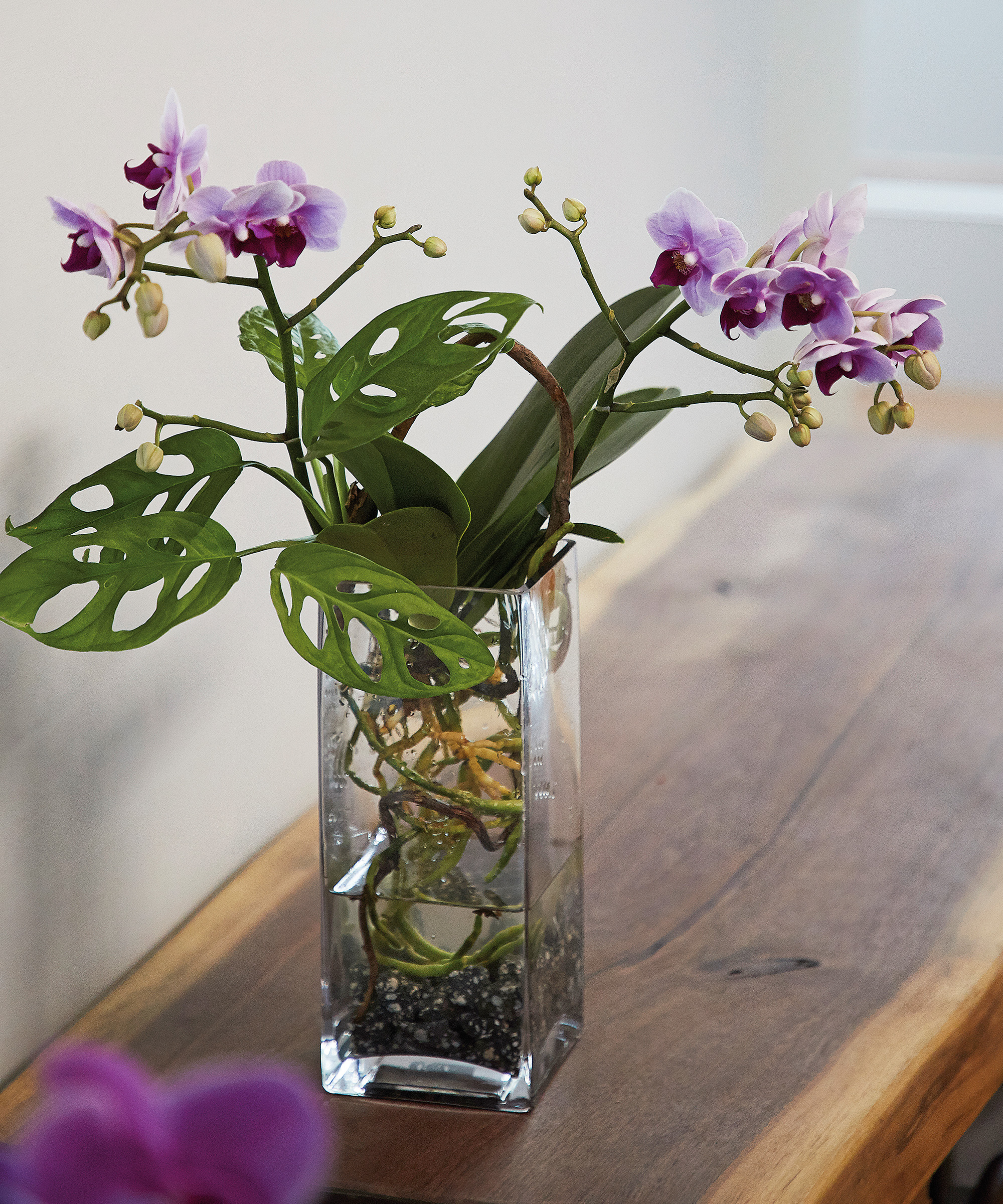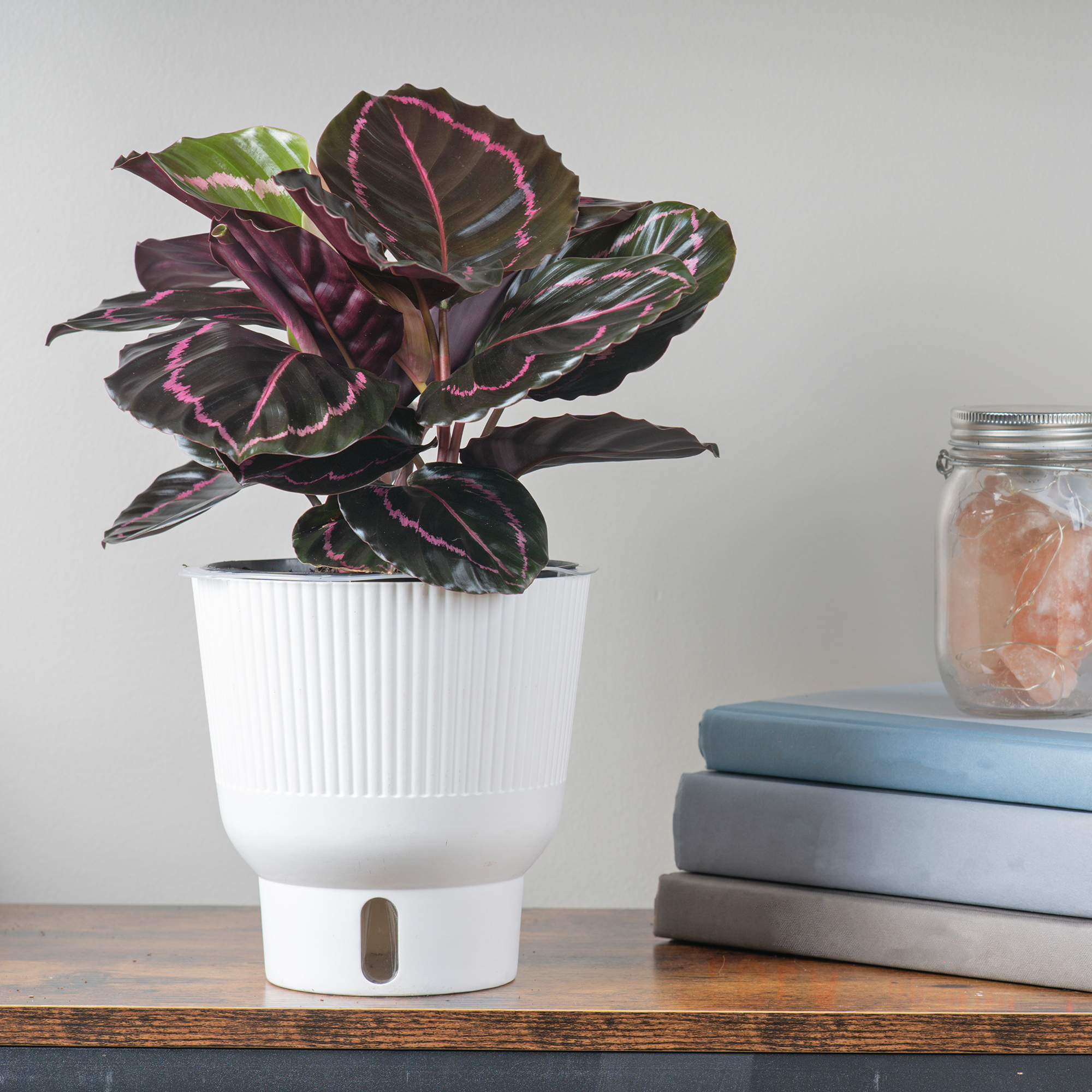Growing Orchids In Water – The Easy Solution For Healthy Plants
If you can't seem to perfect your orchid's watering regime, then hydroponics could be the answer. Water culture orchids are easy to grow and may even thrive more than potted plants. Discover how to do it with this step-by-step guide.

Melanie Griffiths

Take your houseplant collection to new heights by growing orchids in water. The plants' exotic flowers and characterful roots make them the perfect display piece.
Widely known as water culture orchids, or hydroponic orchids, these plants can be cultivated by even a novice grower. The simple technique requires only an appropriate container, water, sterile tools, and a little patience.
Orchid care can be tricky to perfect in the home environment. Beginner growers often struggle to make orchids bloom and to look after the aerial orchid roots. Yet, when done correctly, growing orchids in water can improve the health of ailing plants.
Follow our expert tutorial and have fun experimenting with water culture orchids.

Why Growing Orchids In Water Is A Good Idea
Different types of orchids have their own growing preferences but most will thrive in a good orchid potting medium made from bark, like this one from Miracle-Gro, available at Home Depot.
However, if that potting mix is too soggy or becomes infected, it can cause health deterioration and common orchid problems such as root rot and leaf spots.
Orchids bought from a nursery may have their roots wrapped in sphagnum moss. This is good at keeping the roots moist but bad at letting them dry, and can also harbor pathogens.
Sign up for the Gardening Know How newsletter today and receive a free copy of our e-book "How to Grow Delicious Tomatoes".
Though it seems contradictory, growing orchids in water can offer a solution to plants suffering from too much moisture.
Water culture orchids are not necessarily left constantly submerged in water. They are usually rotated between wet and dry; for example, two days of soaking in water and five days of drying out. This pattern more closely mimics the plant's experience in the wild and lets roots breathe.
Many orchids are epiphytic plants, which means they grow on the surface of other plants, such as trees. They take most of their moisture and nutrients from the air, and surrounding water and debris. This means the moisture is consistent, in most cases, but never excessive or boggy.
Growing orchids in water provides the plant with a cultural situation that allows just enough moisture during the soaking and then allows the aerial roots to dry to prevent pathogens.

How To Grow Orchids In Water
To create a water culture orchid, simply un-pot the plant, remove any media – including moss and bark bits – and gently tease the roots out from their tightly tangled mass. Rinse the roots well and, using sterile pruners like these highly rated pruners from Amazon, gently cut away any discolored or rotten material.
Leave the orchid to dry out for a day or two, to allow the pruning cuts to heal, before submerging it in water.
Some growers like to use an anti-fungal powder, hydrogen peroxide, or cinnamon to clean the roots. However, this is not necessary for hydroponic orchid growing unless your plant has a serious problem with rot.
You can place your orchid in any container with enough room for roots to grow, but it's best to use glass so you can observe the progress of the plant. The container doesn't need to be very deep, but high curved sides can help support the plant and keep it from flopping over. This set of hydroponic glass vases from Amazon is a great option.
Many hydroponic orchid growers add clay pebbles to the bottom of the container to help support roots and raise the crown from the moisture to prevent rot. Amazon carries several brands of clay pebbles.
Finally, add water – but don't just fill it straight from the tap. Some municipalities treat their water until it is laden with chemicals and it can be quite toxic to orchids. A better route is using rainwater, or distilled. It is important to use tepid water to avoid shocking the plant.

How Long Can Orchids Be Submerged In Water?
Some growers leave their orchids constantly submerged in the water with weekly or biweekly water changes. Others swear by soaking an orchid for two days and then allowing it to dry for five days. But you can actually do it either way.
Observe your plant for cues on its continued growth and health. If it declines, then experiment with altering the wet and dry rotation. If the orchid still continues to deteriorate, consider repotting in a traditional bark mix.
How Do You Fertilize Orchids In Water Culture?
Fertlize water culture orchids during the water change. It's important to change the orchid's water regularly – ideally weekly. Use a specialist orchid fertilizer diluted to a quarter of the recommended strength, and apply it to the water weekly. We recommend this Espoma orchid fertilizer, available at Walmart.
If your orchid does not rebloom regularly, then fertilize the water with kelp once per month instead of its regular feed.

Melanie has worked in homes and gardens media for two decades. Having previously served as Editor on Period Living magazine, and worked on Homes & Gardens, Gardening Etc, Real Homes, and Homebuilding & Renovating. An experienced gardener, Melanie has spent the last few years transforming her own yard. She is also a keen home grower, having experimented with pretty much every type of vegetable at some point. In addition, she is a proud houseplant parent and grows a variety of orchids.

Bonnie Grant is a professional landscaper with a Certification in Urban Gardening. She has been gardening and writing for 15 years. A former professional chef, she has a passion for edible landscaping.
- Melanie GriffithsEditor in Chief
